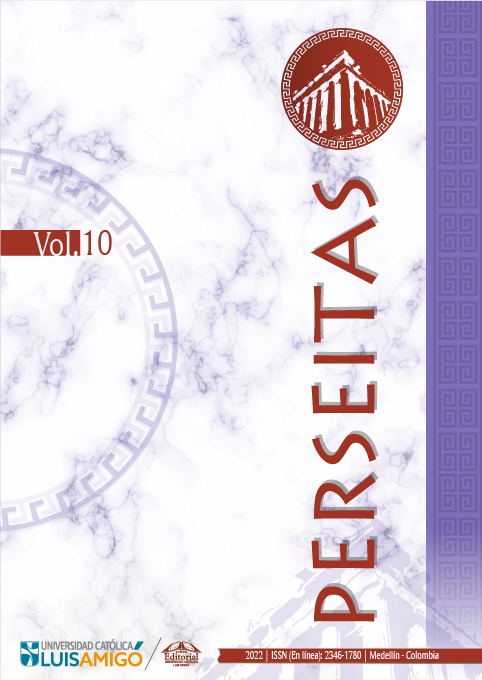A ghost roams Cuba. The nation sutured in The mist of yesterday by Leonardo Padura
DOI:
https://doi.org/10.21501/23461780.4059Keywords:
Allegory, Cuba, Cubanidad, Hallucination, Heterochrony, Nation, Period, SpecialAbstract
This article explores the concept of nation implicit in Leonardo Padura’s seventh novel starring detective Mario Conde, in which he deals with the resolution of a crime that occurred in Cuba’s pre-revolutionary past. The national appears as a flow of images that dialogues with history, where the nineteenth-century nation intervenes palimpsestically with that of the beginning of the twentieth century, the revolutionary period and the crisis of the nineties. Padura undertakes a process of inquiry and suture in which the nation, as a starting point for understanding the post-revolutionary crisis, faces its counterpart: the hallucination produced by the commercialization of its image and symbols. The library, the bolero, the food and the city of Havana are the allegorical vestiges, in Walter Benjamin’s terms, that show how the island is exposed to the contingency of the times.
Downloads
References
Anderson, B. (1993). Comunidades imaginadas. Reflexiones sobre el origen y la difusión del nacionalismo. Fondo de Cultura Económica.
Battaglia, D. R. (2014). Representing Cubanness: Time, Space and Cultural Identity in the Work of Leonardo Padura Fuentes [Tesis de Doctorado, University of Leeds]. https://etheses.whiterose.ac.uk/12518/
Berg, M. L. (2011). Diasporic Generations: Memory, Politics and Nation Among Cubans in Spain. Berghan Books.
Benjamin, W. (2004). Tesis sobre la historia y otros fragmentos. Contrahistorias.
Benjamin, W. (2005). El libro de los pasajes. Akal.
Blanchot, M. (2005). El libro por venir. Trotta.
Buckwalter-Arias, J. (2010). Cuba and the New Origenismo. Boydell & Brewer Ltd.
Calzadilla, I., y Ríos, A. (2005). “Acerca del discurso pronunciado por el Presidente de la República de Cuba, Fidel Castro Ruz, al clausurar el acto por el Día Internacional de la Mujer, efectuado en el Palacio de las Convenciones, el 8 de marzo de 2005”. Granma. https://web.archive.org/web/20080313081348/https://cubaminrex.cu/Archivo/Presidente/2005/FC_080305.htm
Casamayor-Cisneros, O. (2015). Tedio y banquete: “cansancio histórico”, prereconciliación y cubanía en las novelas de Leonardo Padura. A Contracorriente, 13(1), 81-104. https://acontracorriente.chass.ncsu.edu/index.php/acontracorriente/article/view/1459/2455
Colín, J. J., & Miller, C. (2016). La literatura como recurso existencial en el neopolicial latino-americano: La neblina del ayer y Adiós, Hemingway de Leonardo Padura Fuentes. Rocky Mountain Review, 70(1), 34-44.https://www.jstor.org/stable/24898566
De la Campa, R. (2003). Globalización y nostalgia: Buena Vista Social Club. En H. Herlinghauss & M. Moraña (eds.), Fronteras de la modernidad en América Latina (pp. 143.156). Instituto Internacional de Literatura Iberoamericana.
De Man, P. (1991). Retórica de la temporalidad. Visión y ceguera. Ensayos sobre la retórica de la crítica contemporánea. Editorial de la Universidad de Puerto Rico.
Dettman, J. (2008). Utopía y heterotopía en La neblina del ayer de Leonardo Padura. Confluencia, 23(2), 84-92. https://www.jstor.org/stable/27923276
Dettman, J. (2009). Tiempo nublado: La neblina del ayer de Leonardo Padura Fuentes. Hispamérica, 38(113), 37-45. https://www.jstor.org/stable/27809462
English, T. J. (2011). Nocturno de La Habana. Random House Mondadori.
Escribà, Á. M., & Sánchez Zapatero, J. (2006). Manuel Vázquez Montalbán y Leonardo Padura mismas miradas, diferentes latitudes. Hipertexto, (4), 155-158. https://dialnet.unirioja.es/servlet/articulo?codigo=2054251
Fernández, R. A. (2015). Radamés Giro y la investigación de la música en Cuba. Temas, (84), 114-122.
Fineman, J. (1980). The Structure of Allegorical Desire. October, 12, 47-66. https://doi.org/10.2307/778574
Foucault, M. (1986). El pensamiento del afuera. Pre-Textos.
Foucault, M. (1978). Espacios otros: utopías y heterotopías. Carrer de la ciutat, (1), 5-9. http://hdl.handle.net/2099/425
Gutiérrez, M. A. (2018). La Habana imaginada. Nostalgia ruinas y utopía después de 1990 [Tesis de doctorado, Universidad de Chicago].
Han, B.C. (2012). La sociedad del cansancio. Herder.
Jameson, F. (1981). The Political Unconscious. Narrative as a Socially Symbolic Act. Routledge.
Kohan, M. (2015). Ojos brujos. Fábulas de amor en la cultura de masas. Ediciones Godot.
Link, D. (2009). Fantasmas. Imaginación y sociedad. Eterna Cadencia.
Miller, J. A. (1988). Matemas II. Ediciones Manantial.
Montoya, Ó. (2014). Subjetividades postsocialistas y mercados transnacionales de la nostalgia en La Neblina del ayer de Padura Fuentes. A Contracorriente, 11(3), 119-138. https://acontracorriente.chass.ncsu.edu/index.php/acontracorriente/article/viewFile/821/1452
Padura Fuentes, L. (1999). Modernidad y posmodernidad: la novela policial en Iberoamérica. Hispamérica, 28(84), 37-50.
Padura Fuentes, L. 2005. La neblina del ayer. Tusquets.
Padura Fuentes, L. 2015. Aquello estaba deseando ocurrir. Tusquets.
Padura Fuentes, L. (2015a). Cómo nace un personaje. EPUB, Tusquets.
Padura Fuentes, L. (2015b). Yo quisiera ser Paul Auster. Editorial Verbum.
Quiroga, J. (2005). Cuban Palimpsests. University of Minnesota Press.
Rojas, R. (2006). Tumbas sin sosiego. Revolución disidencia y exilio del intelectual cubano. Anagrama.
Rojas, R. (2003). Cultura e ideología en el poscomunismo cubano. En M. de Miranda Parrondo (Ed.), Cuba: sociedad, cultura y política en tiempos de globalización (pp. 79-94). Pontificia Universidad Javeriana.
Serra, A. (2007). The “New Man” in Cuba: Culture and Identity in the Revolution. University Press of Florida.
Zamora, J. A. (1999). El concepto de fantasmagoría sobre una controversia entre W. Benjamin Th.W. Adorno. Taula, quaderns de pensament, (31-32), 129-155. http://hdl.handle.net/10261/201781
Published
How to Cite
Issue
Section
License
Copyright (c) 2022 Perseitas

This work is licensed under a Creative Commons Attribution-NonCommercial-NoDerivatives 4.0 International License.
La revista y los textos individuales que en esta se divulgan están protegidos por las leyes de copyright y por los términos y condiciones de la Licencia Creative Commons Atribución-No Comercial-Sin Derivar 4.0 Internacional.
















